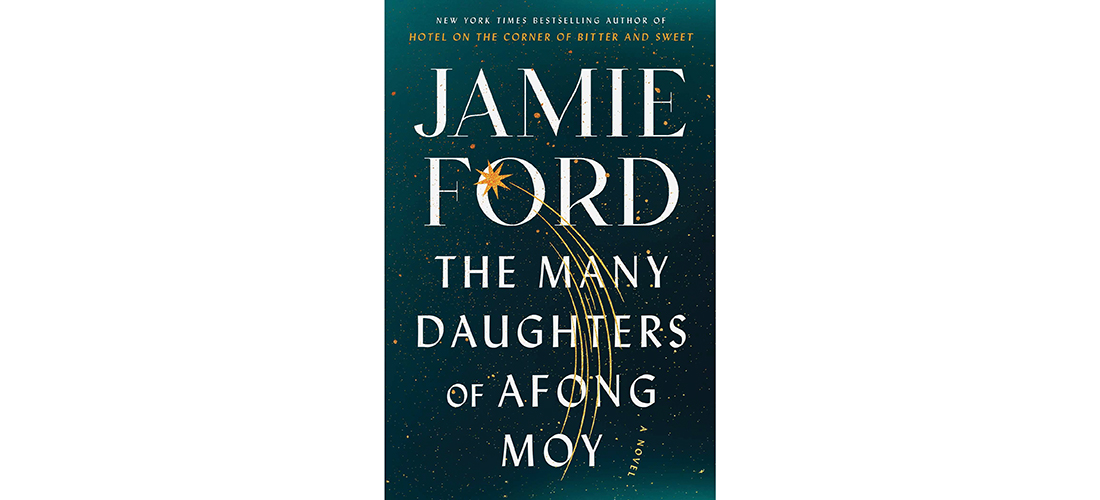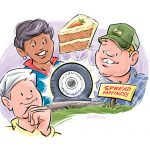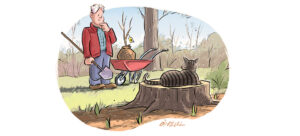
Generational Trials and Trauma
Can the genetic past also be prologue?
By Stephen E. Smith
Is it possible to predict and thereby alter an individual’s spiritual destiny by analyzing emotional frailties that are inherited genetically from long-forgotten ancestors? That’s the question at the heart of Jamie Ford’s novel The Many Daughters of Afong Moy.
Afong Moy was the first known Chinese woman to immigrate to the United States. In 1834, she arrived in New York City and was exhibited as “The Chinese Lady.” Americans, most of whom had never seen a person of Asian heritage, had immense interest in her language, her clothing, and her 4-inch bound feet. She toured widely in the United States, appearing on stages in major cities on the East Coast. She met President Andrew Jackson and was employed for a time by P.T. Barnum. But her popularity waned in the 1840s, and there’s no record of Moy after the 1850s. She was, however, the first Asian woman that many Americans had seen in the flesh, and her appearances influenced perceptions of Chinese women and culture long after her disappearance from the American theatrical scene.
Ford fleshes out the unknown details of Moy’s life, and although there’s no evidence that she had children, her fictional descendants and their trials and traumas are the subject of his novel. Their stories, especially their emotional sufferings, are explained by using the theory of transgenerational epigenetic inheritance, which is, simply stated, the transmission of epigenetic information through the germline — a theory which will, for most readers, immediately beg the question: Do the emotions we feel influence our genes and those of our descendants?
Online sites explicating transgenerational epigenetic inheritance abound, but Ford offers his own simplified explanation in his Author’s Note (which conveniently relieves him of having to craft an awkward explanation in the text of the narrative): “Take a moment and think about your own family, their joys and calamities,” Ford writes. “Do you see similarities? Do you see patterns of repetition? Rhythms of good and bad decision making? Cycles of struggle and triumph?”
It’s a tenuous thread upon which to base a novel. While the inheritance of epigenetic characteristics may occur in plants and even in lab mice, the extent to which it occurs in humans remains unclear, and readers are likely to harbor doubts as to the theory’s validity. Might not the transgenerational theory be an attempt to escape our problems in the present by blaming them on distant ancestors? What could be easier than attributing our personal troubles to the dead? And how far into the past might this psychological necrophilia extend?
Nevertheless, Ford has crafted an intriguing novel that’s contingent on the reader’s acceptance of transgenerational epigenetic inheritance, a term which surely sounds impressive and therefore has enough intellectual import to entice the curious. If the novel is a protracted exercise in illustrating by use of example, there are interesting stories to be told, and Ford does a workmanlike job of telling those stories.
He explores the lives of six generations of the Moy family — Afong Moy, Lai King Moy, Fei-jin “Faye” Moy, Zoe Moy, “Greta” Moy and Dorothy MoyAnnabel — and although each character is adequately developed and the narratives interestingly interrelated, the two primary storylines involve Afong and her mid-21st century descendant Dorothy, Washington state’s former poet laureate, who is channeling dissociative episodes that are affecting her mental health.
The novel opens with Faye Moy, a nurse working with the Flying Tigers in China in 1942, who unsuccessfully attempts to save the life of a wounded pilot. After his death, she examines his personal belongings, which include a pocket watch with a newspaper article that features a photo of her — a photo she’s never seen and has no memory of having been taken. On the back of the newspaper article are written the words “FIND ME.”
Moving forward from that intriguing clue, the narrative jumps to 2045 and Dorothy’s life in Seattle, where the city is besieged by the adverse consequences of climate change. The world of the future, for better or worse, manifests itself all around her, as when a computer-generated elevator voice chats with her: “Good morning, Ms. Moy. You’re up awfully early. Might I offer you direction to a nice coffee shop or patisserie? I could summon a car for you”; or when Dorothy recalls her doctor’s explanation of transgenerational epigenetic inheritance, “How each generation is built upon the genetic ruins of the past. That our lives are merely biological waypoints. We’re not individual flowers, annuals that bloom and then die. We’re perennials.”
And so it goes with Afong’s “daughters”: in 1927 Zoe Moy is a student in England at a school run as a pure democracy; Lai King Moy is quarantined in San Francisco in 1892 during a plague epidemic and a great fire; Greta Moy is a contemporary tech executive who creates a multi-million-dollar dating app, etc. These narrative transpositions culminate when Dorothy overcomes her psychological inheritance via a plot twist that borders on science fiction/fantasy.
If this seems confusing, well, it is, and readers will be required to focus their full attention on a plotline that is crowded with characters and frustrating complexities. When the episodic storylines finally come together, readers who have bought into the transgenerational epigenetic inheritance theory will likely experience a sense of completion. Skeptical readers might well feel they’re the victims of a 350-page shaggy dog story.
The Many Daughters of Afong Moy will be in bookstores in June. OH
Stephen E. Smith is a retired professor and the author of seven books of poetry and prose. He’s the recipient of the Poetry Northwest Young Poet’s Prize, the Zoe Kincaid Brockman Prize for poetry and four North Carolina Press Awards.





